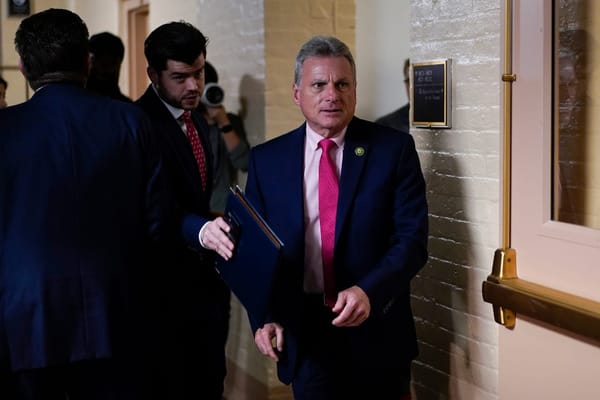Stimulus Compromise Awards $7.2 Billion for Broadband, Splits Funding Between Agencies
WASHINGTON, February 13, 2009 – Advocates for federal promotion of broadband access breathed easier after a congressional conference committee reported a final version of the economic stimulus bill with $7.2 billion for broadband – more than either chamber had allocated individually.
Andrew Feinberg
By Andrew Feinberg, Reporter, BroadbandCensus.com, and Drew Clark, Editor, BroadbandCensus.com
WASHINGTON, February 13, 2009 – Advocates for federal promotion of broadband access breathed easier after a congressional conference committee reported a final version of the economic stimulus bill with $7.2 billion for broadband – more than either chamber had allocated individually.
The conference report provided for a total of $7.2 billion dollars for broadband programs. $4.7 billion will be administered by the Commerce Department, and $2.5 billion will be administered by the Agriculture Department.
The House version would have spent $6 billion on broadband. Although initial version of the Senate bill boosted the total to about $9 billion, the final Senate-passed measure put the total at $7.1 billion.
The legislation is designed to increase broadband adoption and deployment in unserved and underserved areas, and in schools, libraries, and to low income Americans and the elderly. The bill also encourages deployment of broadband services to improve public safety communications among first responders.
Some observers feared that the broadband section of the stimulus bill might be cut from the final conference report. But rather than reduce the amount of funding or remove the program entirely, the conference report included compromises on the amount and direction of funding for new broadband deployment, open network requirements, and the role of the Federal Communications Commission.
In a compromise between the two chambers, $2.5 billion will be allocated to grants administered by the Agriculture Department’s Rural Utilities Service. The House bill allocated $2.825 billion, while the Senate bill had allocated $100 million to the service.
Under the final agreement, the $4.7 billion administered by the National Telecommunications and Information Administration of the Commerce Department comes with several specific requirements.
Of the $4.7 billion in NTIA funds, up to $200 million are reserved for “public computer center capacity,” specifically community colleges and public libraries. Another $250 million is set aside for competitive grants for “innovative programs to encourage sustainable adoption of broadband services.” Another $10 million will go to oversight by the department’s inspector general.
The final version will make up to $350 million from the $4.7 billion in NTIA funds available for broadband mapping.
In a change from both the Senate and House versions, however, that $350 million “may be expended pursuant to Public Law 11-385 [the Broadband Data and Improvement Act] and for the purposes of developing and maintaining a broadband inventory map pursuant to division B of this Act.”
Division B of the fiscal stimulus bill is the section in which the NTIA is given direction on the parameters whereby it should spend its $4.7 billion, and in which the FCC is tasked with developing a specific national broadband strategy.
In other words, up to $350 million may be spend both on broadband mapping, according to the provisions of the Broadband Data and Improvement Act, and according to the broadband strategies and direction developed by the NTIA and the FCC.
The House had allocated $350 million to the NTIA to implement broadband mapping, while the Senate had allocated $350 million to be provided through S. 1492.
The Broadband Data and Improvement Act, or S. 1492, passed Congress last October. But the final version of the measure omitted any funding, and also struck the national broadband map that had been included in the House-passed Broadband Census of America Act, or H.R. 3919.
Additionally, the fiscal stimulus bill provides for the FCC – subject to the consent of the Appropriations Committees – to seek to transfer NTIA funds to the FCC.
The final agreement maintains the general structure of the Senate broadband provisions, which did not include the high mandatory speed requirements for the receipt of broadband funds that were included in the House measure.
The compromise version does add an additional section, Sec. 6001 (h)(2)(B), which requires that the Assistant Secretary of the NTIA to consider applications that will “provide the greatest broadband speed possible to the greatest population of users in the area.”
NTIA will also receive an additional $650 million for its television converter box program in order to make sure enough coupons are made available to Americans before the final transition to digital television transition on June 12, 2009. The transition was originally set to occur February 17, 2009, but was pushed back at the request of the Obama administration and with the support of the FCC and consumer groups.
The FCC’s role in the broadband grant program has been diminished somewhat. The House bill called for the commission to define the “unserved” and “underserved” areas that grants would be directed towards.
The conference report only allows the agency an advisory role, with the NTIA acting “in consultation” with the commission. Final authority over the “Broadband Technology Opportunity Program” will rest with the NTIA.
The conference report language was welcomed by many advocates of network neutrality, some who had feared the Senate version of the bill including “open access” requirements for grant-funded networks would be removed by conferees at the behest of the telecommunications industry.
Reacting to the Final Stimulus Agreement
The plan for a national broadband strategy is a good idea that is long overdue, said Free Press Policy Director Ben Scott. The FCC is the agency with the most experience to outline a national broadband strategy, he said. Scott said Free Press was “not too concerned” over the reduction in the FCC’s responsibilities over the grant program because the commission does not have any statutory authority to award grants.
Scott, along with National Cable and Telecommunications Association president Kyle McSlarrow signed a letter to Senate leaders last week asking that NTIA be the made sole grantmaking authority.
Even with the compromise between NTIA and the RUS, Scott said he thought NTIA’s role is “totally appropriate.” He said it would be “foolish” for NTIA to ignore the FCC, he said, since the commission has the most experience in distributing telecommunications funding via the Universal Service Fund.
Scott reserved his highest praise for the “open access” provisions in the bill, which direct the NTIA to require grantees to adhere, at minimum to the “four points” of the FCC’s 2005 Internet Policy Statement.
The openness provision is a “really big moment in telecommunications policy,” Scott said. By codifying the FCC’s policy statement into law for the first time, Scott said it indicates a clear legislative intent for NTIA to eventually go “over and above” the FCC’s rules.
Moving Toward Final Passage
Both chambers are expected to vote on the bill before day’s end. While the House is expected to vote sometime after 2 p.m., Senate Majority Leader Harry Reid, D-Nevada, said he would hold off on a vote until Sen. Sherrod Brown, D-Ohio, could return from his home near Cleveland, where he is attending his late mother’s funeral.
Aides for Sen. Ted Kennedy, D-Mass., said he would not be returning to Washington to vote because of his ongoing treatment for a malignant brain tumor. Also in question was whether any planned vote would occur after nightfall. Sen. Joseph Lieberman, I-Conn., an Orthodox Jew, does not participate in votes that occur on the Jewish Sabbath, which extends from Friday’s sunset to Saturday evening.
Broadband Census Resources
- House Appropriations Committee
- Bill Text, Division A, House Appropriations Committee web site.
- Conference Report, Division A, House Appropriations Committee web site.
- Bill Text, Division B, House Appropriations Committee web site.
- Conference Report, Division B, House Appropriations Committee web site.










Member discussion